Curbside sales hit a roadblock
June 15, 2011
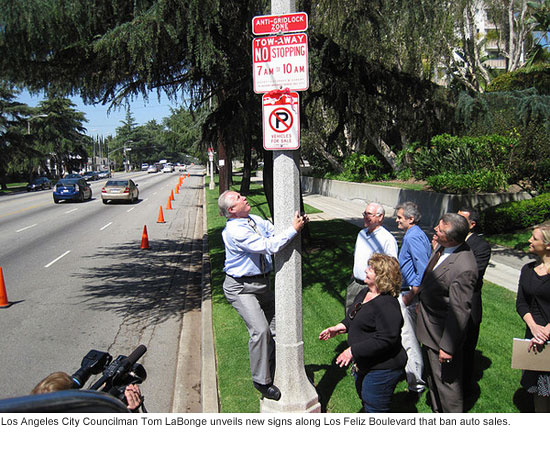 Parked bumper-to-bumper on busy streets throughout Los Angeles County, they seem to materialize out of nowhere, lines of used cars with hand-lettered “for sale” signs in the windows. And while those vehicles may look like a bargain, they can carry a stiff price for the surrounding neighborhoods and beyond.
Parked bumper-to-bumper on busy streets throughout Los Angeles County, they seem to materialize out of nowhere, lines of used cars with hand-lettered “for sale” signs in the windows. And while those vehicles may look like a bargain, they can carry a stiff price for the surrounding neighborhoods and beyond.
A study by the DMV in Los Angeles last year concluded that, among other things, these curbside auto bazaars have led to hazardous traffic jams, increased pollution and rampant consumer fraud, including the sale of stolen cars with fake paperwork. In some cases, individual sellers were found to be illegally hawking multiple cars, turning the public streets into their personal lots.
On Tuesday, armed with that assessment, the Board of Supervisors decided to slam on the brakes, giving initial approval to an ordinance introduced by Supervisor Gloria Molina that would ban vehicle sales on nearly 1,000 specific blocks in the county’s unincorporated areas. A second and final vote is scheduled for next week.
The board’s action comes one month after the City of Los Angeles, led by City Councilman Tom LaBonge, banned auto sales along Los Feliz Boulevard and Franklin Avenue near Griffith Park, where the car trade has long flourished on weekends.
Helping lead the enforcement strategy was lawyer Sari Steel of the County Counsel’s Office, who worked closely with city and county officials, as well as with the DMV and law enforcement. “Their days are numbered,” she says of the outlaw sellers.
For years, both the county and city had laws broadly banning vehicle sales on public streets. But more than a decade ago, Steel says, the city’s measure was successfully challenged in federal court as an unconstitutional infringement on commercial free speech, prompting the county to stop enforcing a similar ordinance. The speech in question: the “for sale” signs.
In recent years, Steel says, a reexamination of state vehicle codes and other court decisions gave way to a new enforcement strategy, one targeting specific streets where it can be determined that a substantial government interest is at stake, such as neighborhood safety. The county’s proposed new ordinance hits sellers hard in the pocketbook; if they’re caught twice in a restricted area within 30 days, their cars are impounded and penalties are imposed.
Steel acknowledges one potential shortcoming to the approach: some determined sellers may simply move from one of the 78 streets listed in the ordinance to set up shop elsewhere. And on Tuesday, that possibility clearly was on Supervisor Don Knabe’s mind.
“My feeling is that you’re either all in or you’re all out,” an irritated Knabe declared. He argued that a sales ban on certain streets would do nothing to solve a problem that he described as endemic in his district. As for the potential unconstitutionality of a countywide prohibition, the supervisor said bluntly: “Why don’t we let somebody sue us and find that out for a fact.”
Knabe also said he was bothered by the cost of putting up enforcement signs in the restricted areas, estimated at $400,000 by the county’s public works department. The board approved a motion by Knabe for a report in 30 days on the ordinance’s costs and approach.
For her part, Steel remains optimistic, noting that new streets can be added to ordinance in the months and years ahead. “No, I’m not satisfied yet but I’m happy that there’s finally progress…Our enforcement is going to make it inconvenient for the sellers no matter where they set up.”
Posted 6/15/11
A time to dream big
June 15, 2011
 Whether you’re wearing a cap and gown or just sitting proudly in the audience, graduation season offers a hearty dose of uplift. And for those of us invited to join the festivities as commencement speakers, as I recently was at Monroe High School, where my son graduated more than a decade ago, it’s also chance to reflect on some of the life lessons that have mattered most to us over the years. Here are a few of mine, excerpted from my remarks at Monroe.
Whether you’re wearing a cap and gown or just sitting proudly in the audience, graduation season offers a hearty dose of uplift. And for those of us invited to join the festivities as commencement speakers, as I recently was at Monroe High School, where my son graduated more than a decade ago, it’s also chance to reflect on some of the life lessons that have mattered most to us over the years. Here are a few of mine, excerpted from my remarks at Monroe.
—
We’re fond at these commencement exercises of quoting Mark Twain. He once said, “Don’t let your schooling interfere with your education.” I know from personal experience with my own son that Monroe not only offered a great schooling, but one heck of a good education. An education in the real world; in the development of friends and relationships that have lasted him for these last 11 years, and will last a lot longer.
As you get further away from this day, you’ll realize that there are three, four, maybe five teachers that you had who made a difference in your life in one capacity or another. I still think of my high school teachers, the one who taught me how to write a composition, the one who taught me how to think logically in plane geometry. My track coach, Mr. Balzarett, who was also the track coach here at Monroe for many, many years, maybe had as much influence on my life as any single human being, to give me the sense that I could do whatever I wanted to do. Those kinds of relationships, and those kinds of mentors, are people who will have an influence on your life for years and decades to come.
Don’t let yourself, and don’t let anybody else, get in the way of you dreaming big dreams and working hard to achieve them. Don’t let anybody tell you that you can’t be what you want to be. Each one of you, whether you want to be a police officer, a probation officer, a teacher, a scientist, a mathematician, whatever you want to be, don’t let people discourage you. This city needs young men and women like you, to reinvest your heart and soul in the city and in the county—to help kids, to help the homeless, to get them homes, to help clean up our communities, to help educate our children, to help make our communities safe. You can play a critical role in making this an even better city than the one that you are going to inherit in the years ahead.
Don’t let anybody hold you back. Make a difference in your life, and more importantly, make a difference in your neighbor’s life.
Posted 6/15/11
Former Iran prisoner speaks out
June 8, 2011
 Newsweek journalist Maziar Bahari was wrongfully imprisoned amid the tumult of the 2009 Iran election. He comes to the Skirball Cultural Center on Friday with writer and scholar Reza Aslan to discuss the experience and his new book.
Newsweek journalist Maziar Bahari was wrongfully imprisoned amid the tumult of the 2009 Iran election. He comes to the Skirball Cultural Center on Friday with writer and scholar Reza Aslan to discuss the experience and his new book.
The story of Bahari’s arrest is a bizarre and troubling mix of farce and terror involving Comedy Central’s The Daily Show with Jon Stewart. One of the show’s “reporters,” comedian Jason Jones, pretended to be an American spy in a skit lampooning Iran. The sketch took aim at Iran for identifying Bahari and other law-abiding individuals as radical “threats” for espousing outlandish concepts like women’s rights.
According to Bahari, Jones and his producer also met with him in Tehran and he gave Jones a list of people they could talk to for their show. Bahari believes he was being followed by Revolutionary Guards at the time.
A few days later, on June 21, 2009—the day before the bit first aired—Bahari was arrested without charges by Iranian intelligence officers. He was interrogated, tortured and detained in Tehran’s infamous Evin prison. Eventually, clips of his appearance on The Daily Show were presented to him as evidence that he had colluded with a spy, aka comedian Jones. Not even the audible audience laughter on the clips persuaded his captors that their “evidence” was bogus.
Finally, in October, 2009, Secretary of State Hillary Rodham Clinton appealed publicly on Bahari’s behalf and he was released—but not before he was made to sign an agreement to spy for Iran, he said. Bahari also said telephone threats were made to him and his family members, as Iran’s government attempted to control his actions from afar. Safe in London, he refused to spy for them and disclosed their coercive communications to international media outlets. He was then sentenced in absentia to 13 years, 6 months in jail and 74 lashes. None of this has silenced him or deterred his human rights activism.
Fast forward to this week and Bahari is back on The Daily Show—this time as a guest promoting his memoir. He said that humor helped him through the hard time in Evin, and he absolved host Stewart of any blame.
“I could be on Sesame Street and they would accuse Elmo of sedition,” he quipped.
You can watch the entire interview on the show’s website (Part I | Part II | Part III).
Bahari’s memoir, Then They Came for Me, describes his ordeal and the impact it had on his family, some of whom had been imprisoned previously in Iran for political reasons. His family inspired him to stay strong, and the efforts of his wife, Paola, helped take his story to the world.
On Friday, June 10, he will be at the Skirball Center at 8 p.m. for a discussion of his memoir, which will be followed by a book signing and a question-and-answer period. The event is free with the price of admission. Advance tickets are recommended and can be ordered online, where you can also find directions to the venue.
Posted 6/8/11
Hand in hand in NoHo
June 8, 2011
If you support healthy after-school activities for kids—and who doesn’t?—lace up your walking shoes and head to the 11th Annual Hopewalk on Saturday to benefit the North Hollywood-based Hands for Hope program.
The 5K Hopewalk, in support of Hands for Hope’s free after-school programs, starts at 9 a.m. from the southwest corner of Magnolia and Tujunga and ends in North Hollywood Park. You can register for the walk for a $20 donation.
At 11 a.m., the organization also will host a “Kids’ Healthy Activity Fair,” where youngsters participate in 20 different activity stations including basketball, soccer and running an obstacle course. They get tickets for completing the activities, which they can then use for toy prizes (just like at a video arcade, but healthier.) There will also be healthy food sampling from NoHo eateries.
Hands for Hope was founded in 2001 to address “latchkey kid” issues for low-income children aged 8-21. Its after-school programs focus on four areas: academic assistance (tutoring, help with homework), life skills (career and college planning), arts (music, theatre and dance), and health and fitness, which is the focus of this fundraiser. In addition to after-school programs, Hands for Hope also provides information and resources to single parents.
This event is sponsored in part by the Metropolitan Transportation Authority and local businesses. If you go, plan your trip with Metro.
Posted 6/8/11
Chow on gourmet grub in the park
June 8, 2011
Just think of it as a gigantic gourmet food court on wheels.
This weekend, 50 of L.A.’s best-known catering trucks will set up shop for a Food Truck Chow Down. Mobile eateries in attendance will include The Grilled Cheese Truck, Ludo Truck, Nom Nom Truck, Lobsta Truck and more, providing flavors from more than 25 different countries.
The event takes place this Saturday, June 11, from 11 a.m. to 6 p.m. in Los Angeles State Historic Park. Admission tickets are $10 and can be purchased online or at the event. Food from the trucks comes at an additional price. In addition to the trucks, there will be live music, carnival games, art exhibits, an antique car show and an electronic gaming trailer. Organizers are expecting about 10,000 mobile dining aficionados to attend.
The inaugural event also includes a “Mobile Food Business Symposium.” Speakers include truck owners and suppliers, who will teach potential enterpreneurs how to set up their own mobile food business. Additionally, Chef Ludo Lefebvre, who has appeared on such shows as Top Chef Masters and Iron Chef America, will be in attendance from 11 a.m. to noon.
With gourmet food trucks increasing in popularity nationwide, Los Angeles is coming to be known as something of a food truck capital, with a fleet of around 7,000 now patrolling the greater metropolitan area.
If you go, you may notice that some of the trucks are starting to resemble brick-and-mortar restaurants in one important way.
Since January, Los Angeles County’s popular letter-grading system for restaurants has been in effect for food trucks as well, giving diners a visual signal of how their favorite mobile eatery fared in its public health inspection.
A portion of the proceeds from the Food Truck Chow Down goes to the Leukemia and Lymphoma Society, the largest private funder of blood cancer research.
Los Angeles State Historic Park is located at 1245 North Spring Street near Chinatown. Avoid traffic, parking and pollution by planning your trip with Metro. Bon appétit!
Posted 6/8/11
‘Carmageddon’ or BBQ—it’s up to us
June 8, 2011
Forget nothing to fear but fear itself. As they launched an urgent campaign to keep people away from the 405 Freeway in mid-July, L.A.’s leaders said there’s good reason to be afraid—very afraid—of what a 53-hour closure will bring.
With the shutdown of one of the world’s busiest freeways looming, government officials didn’t try to gloss over what driving in the area—and around the region—would be like on the weekend of July 15-18.
“It will be an absolute nightmare,” said Los Angeles Mayor Antonio Villaraigosa.
“Avoid the area like the plague…Stay the hell away from the 405 in the middle of July,” said L.A. City Councilman Paul Koretz.
“Since this is Los Angeles, we think this project should probably be renamed ‘The Nightmare on the 405,’ ” said Richard Katz, chair of the Metrolink board.
“It’s going to be a really horrendous weekend,” Michael Miles, district director of Caltrans District 7. “It’s going to back up probably all the way to San Bernardino County…It’s just going to make a mess…You need to stay away.”
“They’re calling this Carmageddon,” said Supervisor Zev Yaroslavsky. “And our objective is to prove all of the predictors wrong, that it doesn’t need to be a Carmageddon.”
When it was his turn to speak, L.A. City Councilman Bill Rosendahl threw in the rhetorical towel. “They used all the words, there’s nothing more left to say…I’ve got no hyperbole other than, folks, just grab your calendar and put an X on 15, 16 and 17 and don’t come to this side of town to get over the hill one way or the other.”
Amid all the dire prognostications, there were a few bits of good news to come out of Monday’s news conference, the first salvo in a publicity blitz to ensure the motoring public is well aware that the 405 will be closing for 53 straight hours for demolition of the Mulholland Bridge. (Some ramps will begin closing at 7 p.m. on Friday, July 15. The entire freeway will be closed on Saturday, July 16, and Sunday, July 17, and will reopen at 5 a.m. on Monday, July 18. The project will add a northbound carpool lane from the 10 to the 101, along with other improvements.)
The weekend won’t be a lost cause for mobility in the region—if travelers rely on public transportation. It was announced that they’ll be able to ride free on Metro subway lines that weekend. And service will be expanded on Metro bus lines and on the Metrolink train system. Airport officials announced that they are contacting hotels around LAX to see if they will offer deals to passengers who want to avoid freeway hassles by getting to the airport the night before their flight.
Even the humble backyard cookout was singled out—more than once—by its fans in high places.
“A BBQ would be good that weekend,” Miles said. Villaraigosa concurred, making the suggestion both in English and Spanish.
And soon—assuming everyone heeds the advice to “stay the heck out of here”—the July freeway closure will be history, Yaroslavsky said. (Although it will all be repeated when the other side of the bridge comes down some 11 months later.)
“It’s going to be over before we know it,” Yaroslavsky said. “So Los Angeles, we need to suck it up.”
Posted 6/6/11
Kobe jumps in to help homeless kids
June 8, 2011
Turning life around for L.A.’s homeless youth is a tall order. Now there’s an NBA star in the arena.
Game on.
Kobe Bryant and his wife, Vanessa, announced this week that they are throwing the resources of their family foundation into making a difference in the lives of homeless kids.
“We’re going to attack this,” Bryant said during a news conference at My Friend’s Place, a drop-in center for homeless youth in Hollywood. “We’re going to go after it and we’re going to solve it.”
The Lakers guard said he was moved by the life stories of kids he met there. “It’s heart-wrenching stuff,” he said.
Getting involved means more than just financial support, he said; it also means forging a personal connection with homeless young people.
“Basically we want to help them kick butt,” he said. “What I do in the game of basketball is easy compared to what they have to go through. What they have to go through, that’s real determination.”
Bryant said some of the specifics of what the Kobe and Vanessa Bryant Family Foundation will undertake are still being worked out. “We’re still educating ourselves on the issue because we’re kind of brand new to it. But we sunk our teeth into it, man, and we’re going to go after it.”
Supervisor Zev Yaroslavsky, who represents the area and is one of Los Angeles’ leading advocates for homeless issues, praised the Bryants for getting involved—not just for their foundation’s support but for their star quality, which helps draw greater public attention to the problem.
“Homelessness is one of the great stains on American society to this day,” Yaroslavsky said. “The richest society on earth still has hundreds of thousands of people across the country who live on the streets. Here in Los Angeles County, 48,000 homeless persons live on the streets. Almost 20% of them are veterans of the United States military; 7,000 of them are youth.”
He said the county, along with a network of nonprofit service providers, is committed to working with the Bryants to help turn those statistics around.
“This is the center of youth homelessness in Los Angeles County. And if we can solve youth homelessness in Hollywood, we’ll be a long way to solving it for the county as a whole,” Yaroslavsky said.
Bryant said it is possible to drive past homeless people on the streets of Los Angeles and not have their plight register.
“After a game, driving home, you see the issue around you but you don’t see it. It’s kind of one of those things you glance over… It’s all around us. And it’s not fair. And it’s something that we can solve, so let’s do it.”
Posted 6/8/11
How the public won a Malibu sand fight
June 7, 2011
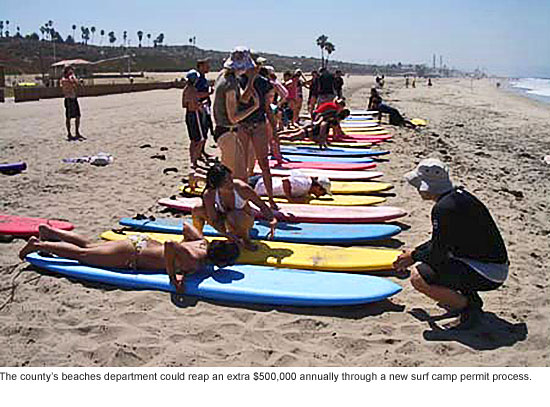 It started last summer in Malibu with a fight between surf camps and led through a black market to a legislative mystery.
It started last summer in Malibu with a fight between surf camps and led through a black market to a legislative mystery.
But the long, strange trip that this year led Santos Kreimann to the discovery of a mistake that was costing Los Angeles County hundreds of thousands of dollars is now offering the intrepid director of the Department of Beaches and Harbors a possible long-term fix for this summer’s first pressing problem: how to keep the beach bathrooms open and clean.
County beach maintenance workers came under fire last week in one of the more publicized sidebars to the county’s ongoing budget challenges. Amid complaints about scaled-back cleaning schedules, late openings and locked doors at the county’s 52 beach restrooms, Supervisors Zev Yaroslavsky, Gloria Molina and Don Knabe called for alternatives.
The discussion generated headlines and local talk radio furor. On Tuesday, Kreimann presented the Board with a short-term plan to delay some hiring and maintenance and to use marina lease-option and lease-extension fees to open more bathrooms earlier and beef up summer cleaning crews.
Less widely-known, however, was the story behind the long-term proposal Kreimann hopes will help pay for not only the bathroom maintenance, but for other beach services going forward: a change in the county’s longstanding permitting system for recreational beach camps.
At issue, Kreimann says, is the way the county allocates beach space to the hundreds of interest groups that do business on the sand each year, including legions of surf camps and summer recreational programs that traditionally have received permits according to seniority. 
For-profit programs are required to pay a small percentage of their gross receipts in exchange for the permits. That assessment, however, has been waived in past years for city-sponsored programs and non-profit organizations; they’ve paid only a modest administrative fee for the privilege of setting up shop on county beaches. “But there are non-profits, and there are non-profits,” says Kreimann. “Some of these camps charge like $600 a week.”
With public revenues dwindling, he says, those non-profit programs looked like an untapped source of revenue. But when Kreimann, who was appointed director in 2009, inquired about the issue, he was told by staffers who’ve since retired that the nonprofits couldn’t be charged because state law prohibited the county from assessing fees on youth groups.
Then last summer, he says, a surf camp in Malibu resurrected the beach permit question when its owner called to demand that an unpermitted rival be thrown off the sand. “The camp operators got into a physical altercation over allegations that one was operating illegally,” Kreimann says.
Allen King, co-owner of Aqua Surf camp, says the set-to was more like “harassment.” But he confirms that the dispute arose from the beach use permitting policy—in this case, the seniority system, not the fees.
As surf camps had proliferated in recent years, beach permits had become highly valuable, and anyone who had one was reluctant to relinquish it to make space for newcomers. When the City of Santa Monica, where King had operated for more than a decade, decided to decrease surf camp permits to reduce beach crowding, King says, he found it impossible to break into the county beach space.
“We tried to get a county permit, we wrote letters, but it was a closed system,” King says. “Whoever got one first would just hold onto it forever, and nothing moved.”
King’s solution: to cut a deal with a permitted surf camp. He says he offered to expand the business of Kanoa Aquatics, based in the South Bay, by setting up shop to the north, on Surfrider Beach in Malibu under Kanoa’s brand.
After a year, however, the relationship soured, according to both parties, and got downright ugly after King returned to Surfrider—without a permit—the next summer, setting up shop right next to the spot where Kanoa’s owner, Kip Jerger, was now operating on his own.
“I got a little personal,” Jerger acknowledges. “In a way I’m sorry but in a way I’m not. I was like, ‘You guys are like sharks coming in from the ocean.’”
King, meanwhile, says he was just “taking a stand” against an unfair permitting system, only to be confronted by his former colleague. “They were out there yelling, ‘You’re illegal! You’re not allowed to be here!’” King says. “You could have built a reality TV show around it, it was so dramatic. No one got into a fistfight, exactly, but someone did throw a rock at our tent, and we have witnesses.”
Kreimann of the beach department says that when the dispute landed on his desk, he felt compelled to revisit the permitting system. Clearly, beach use had to be limited, but the seniority system was creating problems of its own. Some 50 camps had been waiting years for a spot on one of the beaches, and existing permits had been issued and reissued “with no real safety standards.”
“Multiple people were subcontracting their permits,” he says. “A black market is a pretty good analogy.”
And, he learned, only about 30 of the 162 permit holders were paying a share of their gross receipts to the county because of the state legislation that supposedly prevented the county from charging nonprofits.
“So three or four months ago, I said to my staff person, Penelope Rodriguez, ‘Find that law.’ ”
She couldn’t.
Rodriguez, a program manager, says she quizzed colleagues and searched files and databases, but “we didn’t have the actual bill in any files and nobody remembered the year or the author or what group had introduced it.”
Finally, she says, she traced the confusion to a bill from the mid-1990s that had gotten through the legislature before the governor took issue with a provision that said youth groups not only shouldn’t be assessed like for-profit beach camps, but shouldn’t need the same liability coverage.
“It turned out that the law had been vetoed,” says Kreimann. “We should have been charging them all along.”
Kreimann says the faulty legal assumption was “an oversight” by otherwise hardworking employees, the last of whom retired earlier this year. “The actual law was right there in our file when we went back to check it, but they had misunderstood it. It was one of those things you discover when people leave and you get a new set of eyes.”
Since then, a plan to revamp the system and to set up a competitive selection process for summer permits, based on minimum standards set by the county lifeguards, has been working its way through a series of Beach Commission meetings. A workshop was held in early spring.
Jerger, who has had his beach permit for 14 years, says he understands the need to raise revenue—in fact, he works part-time for the county as a recurrent lifeguard. But he predicts a change in the system will let in more camps and worsen beach crowding, which, thanks to the stalled economy, is already at record levels. (According to the County Fire Department’s lifeguard division, attendance last year topped 68 million, nearly double the 38 million beachgoers counted in 2005-06.)
And levying a percentage of gross receipts on nonprofit recreational programs, he says, could force him to start charging the families of hundreds of disabled and needy children, to whom he’s been giving a break on tuition.
King, on the other hand, says he’s glad to ante up if it means getting a permit.
For his part, Kreimann says the assessment will not only add a measure of fairness and oversight to the beach camp landscape, but could net “in the neighborhood of $500,000 a year, conservatively.”
A recommendation is expected to come before the Board by the end of August. Kreimann says it’s too late for the plan to cover the estimated $372,000 it will cost to revamp the cleaning schedule for this year. But if consensus is reached, it could make the summer of 2012 more convenient and fragrant.
And any surplus could go toward Kreimann’s next plan for getting the most out of the county beaches: “A lot of our parking machines are down a lot of the time, and if we replace them, it could really increase revenue.”
Posted 6/7/11
Watch your words—and hands
June 7, 2011
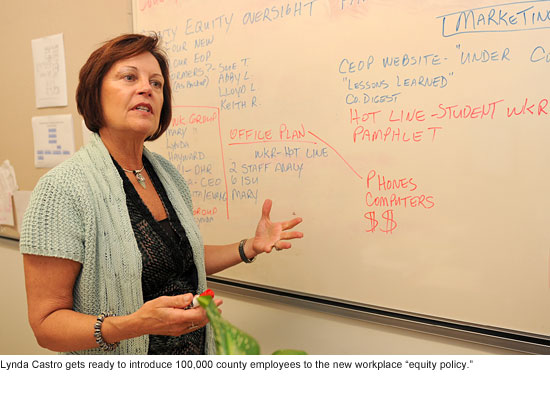 Hey, L.A. County employees, listen up. In case you had any doubts, there’ll be no leering, pinching, cat calls, unwelcomed advances or behavior that’s sexually, racially or ethnically degrading in the workplace. And those are just a few warnings specifically spelled out in the county’s new “Policy of Equity” for the first time.
Hey, L.A. County employees, listen up. In case you had any doubts, there’ll be no leering, pinching, cat calls, unwelcomed advances or behavior that’s sexually, racially or ethnically degrading in the workplace. And those are just a few warnings specifically spelled out in the county’s new “Policy of Equity” for the first time.
“Everyone is going to be held accountable,” says Lynda Castro, who, after three decades with the Sheriff’s Department, was lured out of retirement to oversee the county’s newly revamped approach to workplace harassment and bias. “If the employees treat each other with respect, then they’re more likely to treat the public in the same way.”
Hopefully, the public will also benefit by having to pay less in rising legal costs from lawsuits filed by employees, who’ve alleged sexual harassment or discrimination because of their gender, age, race or sexual orientation. “For risk management and liability concerns,” Castro says, “we have a policy with real teeth.”
At the heart of the new policy and process is the soon-to-be created County Equity Oversight Panel, comprised of four employment-law attorneys who’ll have full access to complaint investigations and, if need be, order further interviews. The panel will recommend discipline or other corrective actions and make sure there’s follow-through by the individual departments—sometimes a problem under the county’s previous, less centralized approach.
Between 2007 and 2010, the Office of Affirmative Action Compliance, which was previously responsible for ensuring compliance with the county’s harassment and discrimination policy, reported receiving 3,370 complaints. Of those, the office determined it had jurisdiction to pursue 2,110 under state and federal statutes.
The new county program, which will go into effect next month, was modeled after one that’s been in place since 2003 in the Sheriff’s Department, where complaints have been cut in half. Castro was a natural pick to serve as the oversight panel’s executive director because, until her retirement in 2009, she a key player in the sheriff’s efforts to reduce harassment and discrimination, including serving two years as chairperson of the department’s equity panel.
“This is a passion for me, an opportunity put a policy in place for 100,000 employees,” says Castro, 61, who was willing for now to sacrifice a life of traveling with her husband and catching her grandchildren’s soccer and basketball games. “There’s not a lot of things that would cause a retired person to come back to work.”
Posted on 6/7/11






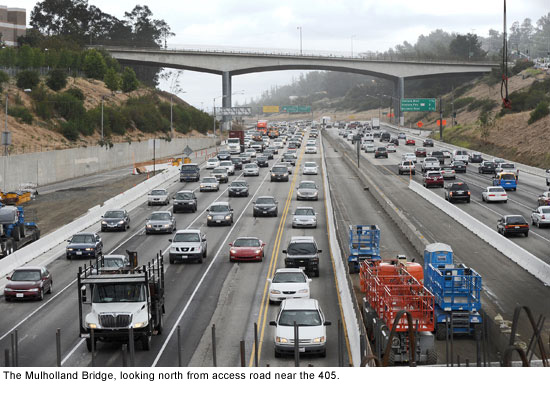
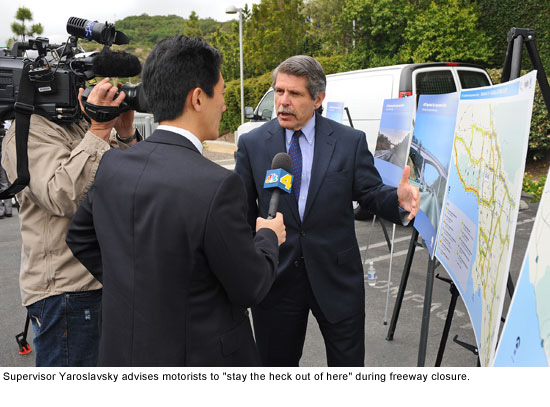







 Check for the latest closure information
Check for the latest closure information








